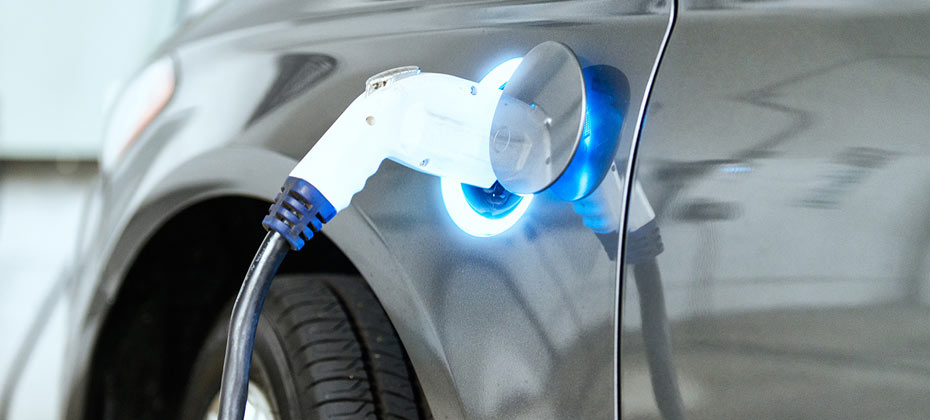All posts by Brad Smith

There are four reasons why the auto industry should be enthusiastic about the electric vehicle segment’s future.

Where are electric vehicles most popular? During the first half of the year, 3.6 percent of all new registrations in California were EVs.

While electric vehicles remain a relatively niche part of the market, with only 0.9 percent of the total vehicle registrations through June 2018, consumer demand has grown quite significantly over the past few years. As I mentioned in a previous blog post, electric vehicles held just 0.5 percent in 2016. Undoubtedly, manufacturers and retailers will look to capitalize on this growing segment of the population. But, it’s not enough to just dig into the sales number. If the automotive industry really wants to position itself for success, it’s important to understand the consumers most interested in electric vehicles. This level of data can help manufacturers and retailers make the right decisions and improve the bottom line. Based on our vehicle registration data, below is detailed look into the electric vehicle consumer. Home Value Somewhat unsurprisingly, the people most likely to purchase an electric vehicle tend to own more expensive homes. Consumers with homes valued between $450,000-$749,000 made up 25 percent of electric vehicle market share. And, as home values increase, these consumers still make up a significant portion of electric vehicle market. More than 15 percent of the electric vehicle market share was made up by those with homes valued between $750,000-$999,000, and 22.5 percent of the share was made up by those with home values of more than $1 million. In fact, consumers with home values of more than $1 million are 5.9 times more likely to purchase an electric vehicle than the general population. Education Level Breaking down consumers by education level shows another distinct pattern. Individuals with a graduate degree are two times more likely to own an electric vehicle. Those with graduate degrees made up 28 percent of electric vehicle market share, compared to those with no college education, which made up just 11 percent. Consumer Lifestyle Segmentation Diving deeper into the lifestyles of individuals, we leveraged our Mosaic® USA consumer lifestyle segmentation system, which classifies every household and neighborhood in the U.S. into 71 unique types and 19 overachieving groups. Findings show American Royalty, who are described as wealthy, influential couples and families living in prestigious suburbs, led the way with a 17.8 percent share. Following them were Silver Sophisticates at 11.9 percent. Those in this category are described as mature couples and singles living an upscale lifestyle in suburban homes. Rounding out the top three were Cosmopolitan Achiever, described as affluent middle-aged and established couples and families who enjoy a dynamic lifestyle in metro areas. Their share was 10.1 percent. If manufacturers and retailers go beyond just the sales figures, a clearer picture of the electric vehicle market begins to form. They have an opportunity to understand that wealthier, more established individuals with higher levels of education and home values are much more likely to purchase electric vehicles. While these characteristics are consistent, the different segments represent a dynamic group of people who share similarities, but are still at different stages in life, leading different lifestyles and have different needs. As time wears on, the electric vehicle segment is poised for growth. If the industry wants to maximize its potential, they need to leverage data and insights to help make the right decisions and adapt to the evolving marketplace.

Electric vehicles are here to stay – and will likely gain market share as costs reduce, travel ranges increase and charging infrastructure grows.

The auto industry has had an impressive recovery from the Great Recession and has enjoyed steady growth for the past seven years. After bottoming out in 2009 at 10.5 million new vehicle registrations, the industry has grown each year since, culminating in 17.3 million new vehicle registrations in 2016. However, the rate of growth has been slowing over the past several years, increasing just 1.03 percent from 2015 to 2016. While retail registrations were nearly flat, the growth came from fleet, with a 13.69 percent spike in registrations by government entities and a 5.59 percent increase in commercial/taxi registrations. When automotive sales growth begins to taper, hanging onto existing customers becomes more important than ever. Fortunately, customer loyalty in the auto industry is rising for manufacturers, dealers and lenders. The manufacturer loyalty rate through November 2016 was 62.8 percent, up from 59 percent in 2010. At the make level, the loyalty rate went from 50.6 percent in 2010 to 54.5 percent through November 2016. Loyalty to a specific dealer is significantly lower but still on the rise, moving from 19.5 percent in 2010 to 23 percent through November 2016. Interestingly, 61.3 percent of all new vehicle registrations in 2016 were to customers 45 years old and older. Manufacturers and dealers who can keep these customers in the fold in the next several years are likely to maintain and grow their overall share. Our recent analysis also looked as how age impacts vehicle purchasing loyalty. In general, older customers tend to be more loyal than younger customers. Manufacturer loyalty rates by age include: 18-24 years old – 58.3 percent 25-34 years old – 55.4 percent 35-44 years old – 59.9 percent 45-54 years old – 64.4 percent 55-64 years old – 68.2 percent 65+ years old – 70.4 percent General Motors market share still number one For manufacturer market share in 2016, General Motors led the way at 16.91 percent. However, this is a significant drop from the 24 percent share of total vehicles in operation (VIO) enjoyed by GM. Toyota was second in manufacturer market share at 15.46 percent, followed by Ford Motor Co. at 12.59 percent and FCA US at 11.77 percent. Honda rounded out the top five manufacturers at 11.19 percent. For manufacturer customer loyalty, however, Tesla came out on top at 73.6 percent, followed by Toyota at 68.7 percent and Subaru at 66.8 percent. Ford and GM round out the top five at 65.7 percent and 64.7 percent respectively. Pickup trucks claim top model share, loyalty rankings Pickup trucks again held the top two positions among the most popular vehicles, with the Ford F-150 at 3.06 percent and the Chevy Silverado at 2.61 percent. Honda claimed the next three spots with the Honda Civic (2.53 percent), the Honda CR-V (2.46 percent) and the Honda Accord (2.37 percent). While the F-150 and Silverado were the most popular models, their competition led the way in customer loyalty. The Ram 1500 full-size pickup truck had a customer loyalty rate of 50.9 percent, followed by the F-150 at 46.3 percent and the Lincoln MKZ at 43.9 percent. In other trends: Non-luxury small CUV/SUVs were tops in segment market at 17.81 percent, followed by non-luxury mid-size sedans (13.89 percent) and non-luxury mid-size SUVs (13.22 percent). Tesla led the industry with a Conquest/Defection ratio of 13.77 to 1. 4-cylinder engines overtook 6-cylinder engines as the top engine type, 38 percent to 37.4 percent Vehicles in Operation are expected to reach 292 million by 2020 For more information on how to drive customer loyalty rates, visit Experian Automotive.

If you listen to some of the latest auto industry analysis, you might get the impression that the industry is doomed because younger consumers aren’t interested in buying cars. It is true the vast majority – 61.3 percent – of new vehicle registrations in 2016 were from customers 45 years old and older, but is that really a cause for concern? Or are automotive marketers simply doing a better job of identifying customers with the means to buy their product? Remember Willie Sutton’s response when asked why he robbed banks? “Because that’s where the money is.” Maybe, just maybe, automotive marketers are getting better at market segmentation and finding the right customers for their vehicles. Maybe, they’re simply going to “where the money is” like Willie Sutton. How do auto marketers know where to look? Experian’s Mosaic® USA consumer lifestyle segmentation is a good place to start. It is made up of 71 different consumer groupings from the most affluent suburbanites to the most economically challenged. Understanding who and where these customers are and knowing which vehicles fit their current lifestyles and economic standing can help automakers and retailers boost sales. Take luxury vehicles, for example. In Q4 2016, the top three Mosaic® consumer segments in the luxury vehicle category included: American Royalty – 12.67 percent Silver Sophisticates – 7.69 percent Aging in Aquarius – 5.01 percent Who are these folks? Individuals and households in the: American Royalty include wealthy, empty nest Baby Boomers with million dollar homes; Silver Sophisticates include a mix of older and retired couples and singles living in suburban comfort; and Aging in Aquarius include empty-nesting couples between 50 and 65 years old with no children at home who are finally enjoying the kick-back-and-relax stage of their lives. What do each of these segments have in common? Their members have the disposable income to pamper themselves a bit, and a luxury vehicle might just be the way to do it. But, what if you sell minivans? The Mosaic consumer segment Babies and Bliss is one target audience to consider targeting. These large families with multiple children live in homes valued over $250,000 and should be at the top of your prospecting list. How about those younger customers who seem so anti-auto? Fast Track Couples -- families on the road to upward mobility, under the age of 35, with good jobs and own their homes are ripe for a CUV. Or perhaps Status Seeking Singles -- younger, middle-class singles preoccupied with balancing work and leisure lifestyles? There’s got to be a hybrid vehicles waiting for them, right? Just because younger customers are still in the minority of auto buyers, it doesn’t mean the industry is in crisis. The right customer segment for the right vehicle is out there – even in the younger demographics. And besides…younger customers get older so now is the time to win their hearts and minds and begin building a long-term relationship with them. But, if you’re not the patient type and you’ve got a vehicle to sell, you can find your next best customer by using Mosaic USA to create cross-channel messaging that connects with the lifestyle and values of your audience. For more information on automotive target marketing, visit Experian Automotive.
With Detroit’s Motor City being the epicenter of the North American automotive manufacturing industry, that detail should come as no surprise. Furthermore, a recent analysis of Experian data showed that of the nearly 12.6 million consumers who returned to market to purchase a new vehicle, 60.9 percent remained loyal to their brand. Consumers going from a Certified Pre-Owned (CPO) vehicle to another CPO vehicle from the same original equipment manufacturer (OEM) showed even higher loyalty rates at 75 percent. Seeing as how pre-owned vehicle purchases are on the rise, and becoming more and more popular among consumers across all credit risk tiers, it isn’t unexpected to see higher loyalty rates in the CPO category. CPO vehicles are an attractive option for both auto manufacturers and consumers. Auto manufacturers continue to increase sales through higher rates of lease penetration, then channel these off-lease vehicles into certified pre-owned fleets. In essence, they are controlling both supply and demand of their off-lease used vehicles and building an amazingly loyal customer base. By understanding these loyalty rates, manufacturers, dealers and resellers are able to make smarter decisions that create more opportunities for themselves and in-market consumers. Buying a CPO vehicle can also give consumers an extra layer of confidence when making a purchasing decision because of the multi-point inspections included in the manufacturer’s program. Now, what about Michigan you ask? Well, if you are a Michiganian, you are 63 percent more likely to remain loyal to your particular brand of car. The analysis showed North Dakota (62.4 percent) and South Dakota (61.4 percent) round out the top three states with the most brand-loyal consumers. But, regardless of home state, which brands do consumers choose time and time again? Well, for overall brand loyalty including all purchase types, Tesla ranked highest, with 70.3 percent of Tesla owners choosing to buy another. Subaru was second, with 65.9 percent of its owners coming back, followed by Ford at 65 percent, Toyota at 63.5 percent and Mercedes-Benz at 63.1 percent. Other findings: CUV/SUV owners were most loyal when returning to market, with 69.6 percent returning to buy another CUV/SUV, followed by pickup owners (59.6 percent), sedan owners (58.4 percent), minivan owners (33.2 percent) and hatchback owners (29.4 percent). CPO owners choosing to purchase another CPO vehicle, were loyal to: Ford, 84.6% Mercedes-Benz, 82.8% Honda, 81.9% Toyota, 81.6% Lincoln, 78.1% CPO owners that chose to buy a new vehicle, were loyal to: Kia, 65% Ford, 63.5% Toyota, 63.1% Honda, 60.5% Chevrolet, 58.4% To find out more about Experian Automotive’s research into the automotive marketplace, visit https://www.experian.com/automotive/auto-industry-analysis.html.

Environmentally friendly, lower fuel costs and tax incentives. These are all words that describe alternative-powered vehicles, and serve as reasons why many car shoppers flocked to their local dealerships over the past several years with the intent of “going green” with their next vehicle. However, that trend seems to be fading into the past. As gas prices continue to trend downward, we have seen more and more consumers steer away from hybrids. In fact, according to Experian’s recent Automotive Market Trends and Registrations analysis, when it came to fuel type, hybrids only made up 2.5 percent of the vehicles registered in the third quarter of 2015. This was a 19.2 percent drop from a year ago. Meanwhile, gas-powered vehicles dominated the market at nearly 94 percent. Furthermore, the analysis found that the hybrid car was the vehicle segment that suffered the second largest year-over-year decrease in registrations and its second consecutive quarterly decline, reducing by 19 percent. Conversely, the upper premium sports car (including vehicle models, such as the Porsche 911, Jaguar XJ and BMW 6-Series) saw the highest percentage increase, growing by 45 percent over the same time period. From an overall market perspective, the analysis found that through the third quarter of 2015, new vehicle registrations increased by 5.5 percent from the previous year – a clear sign that the market continues to trend in a positive direction. As previous Experian analyses have indicated, as long as consumers continue to stay on top of their monthly payments, the boom in new vehicle sales will be a positive sign for the industry. The analysis also examined the demographic characteristics of the new vehicle buyer, and found that nearly 50 percent of the new vehicle purchasing power in the U.S. falls to consumers between the ages of 40-69. What’s more, individuals with incomes from $50,000-$100,000 made up 35.5 percent of all new vehicle buyers. Like many things in life, the automotive market is ever changing. At one moment, a segment of vehicles could be selling like hot cakes, and the next moment suffer a steep decline in sales. Gaining insight into these types of trends enables manufacturers and retailers to better understand the fluctuations in the market, and more easily position their businesses for success. And the better positioned they are for success, the more “green” these companies will see.

Since Henry Ford invented the assembly line and mass automotive production began, the primary objective of all manufacturers and dealers has been to move new vehicle inventory off the lot year after year. But nowadays finding the right automotive customer can be a challenging task. Where do they live? How old are they? How much do they make? By leveraging data to answer these questions, manufacturers can market to the appropriate audience and manage inventory accordingly. In fact, a recent Experian analysis of the automotive market found that the top 10 states accounted for nearly 60 percent of all new vehicle registrations during the second quarter of 2015, led by California at 12.6 percent. The remainder of the top 10 included Texas (9.9 percent), Florida (7.9 percent), New York 5.7 percent), Pennsylvania (4.4 percent) Ohio (3.9 percent), Illinois (3.8 percent), Michigan (3.7 percent), New Jersey (3.5 percent) and Georgia (2.8 percent). Diving a bit deeper, the analysis also showed that through May 2015, nearly 50 percent of all new vehicle buyers fell within the 40-69 age range. Furthermore, 17.9 percent were between the ages of 50-59. The analysis also found that individuals with incomes from $50,000-$100,000 were the most active new car shoppers during the same time period, equating to nearly 36 percent of the market. Other findings include: Los Angeles and New York were the two DMAs with the highest market share for new vehicle registrations at 6.8 percent and 6.7 percent, respectively Toyota (13.5 percent), Ford (11.6 percent) and Chevrolet (10.8 percent) were the top 3 brands with highest new vehicle market share among retail buyers through Q2 2015 Entry-level CUVs accounted for the highest percentage of new vehicle registrations at 14.6 percent, followed by the small economy car (11.0 percent) and full-sized pickup trucks (10.7 percent) Leveraging data and analytics gives manufacturers and dealers a competitive advantage by enabling them to better understand the entire automotive market, specifically new vehicle trends. With these actionable insights, automotive companies will be positioned to make more confident inventory decisions and target specific consumers. And by better understanding whom they are targeting, manufacturers and dealers will be able to check their primary objective off the list.